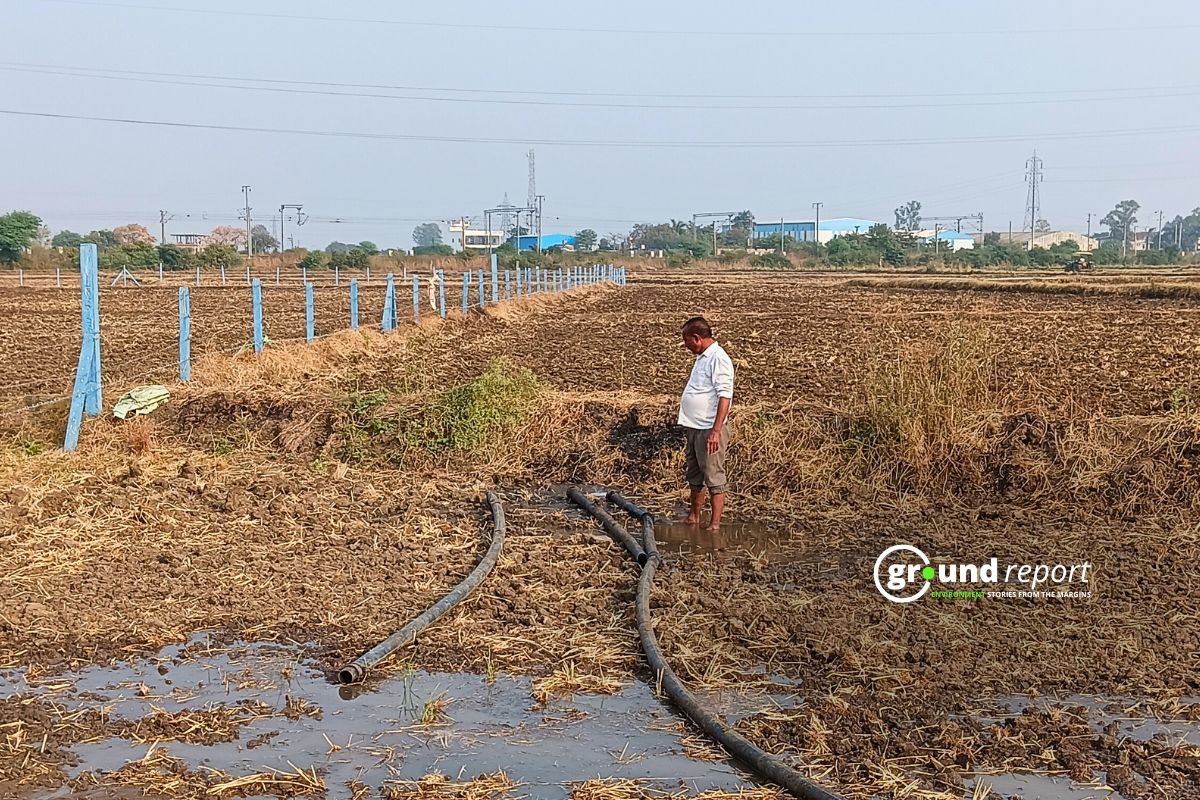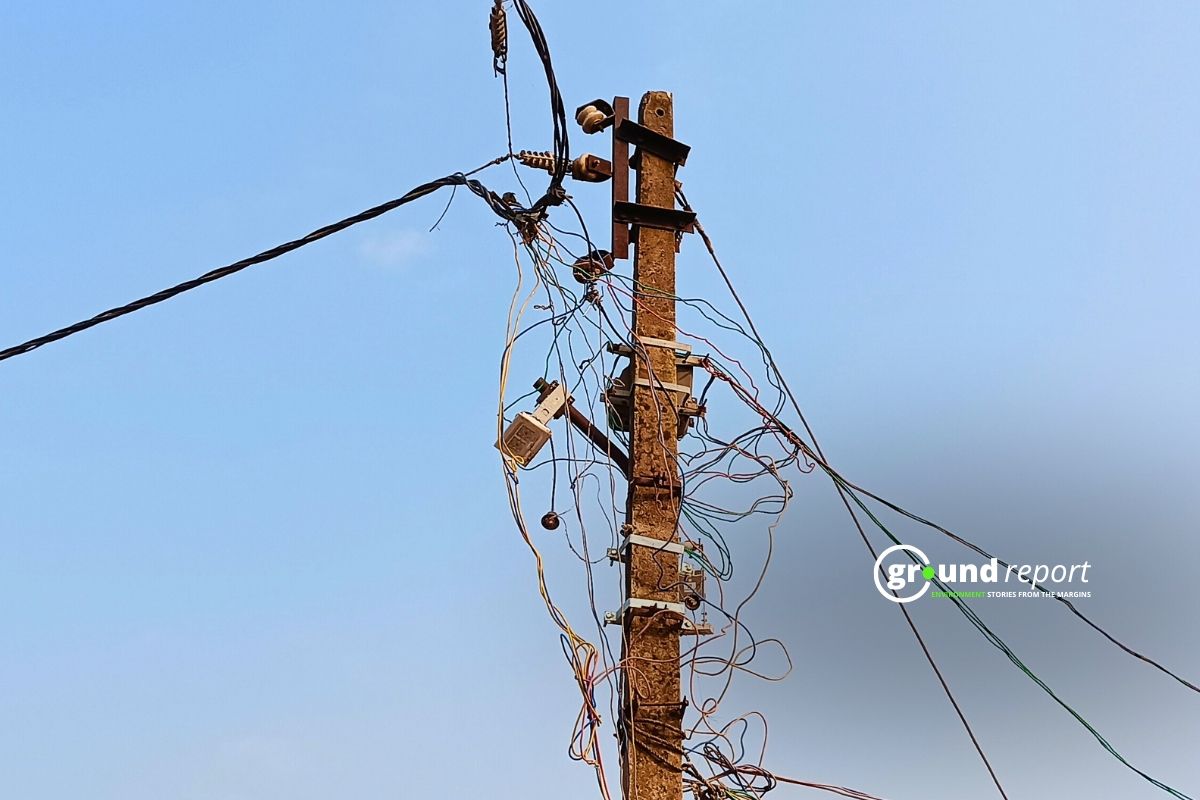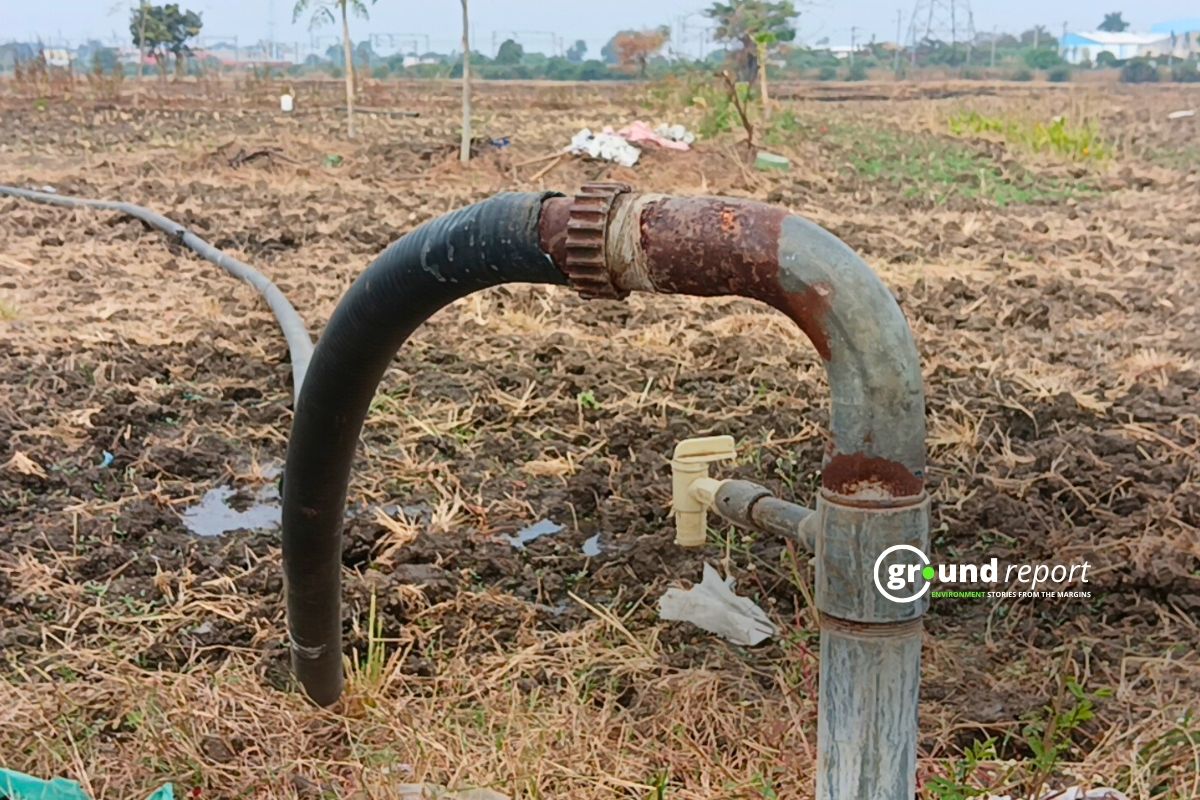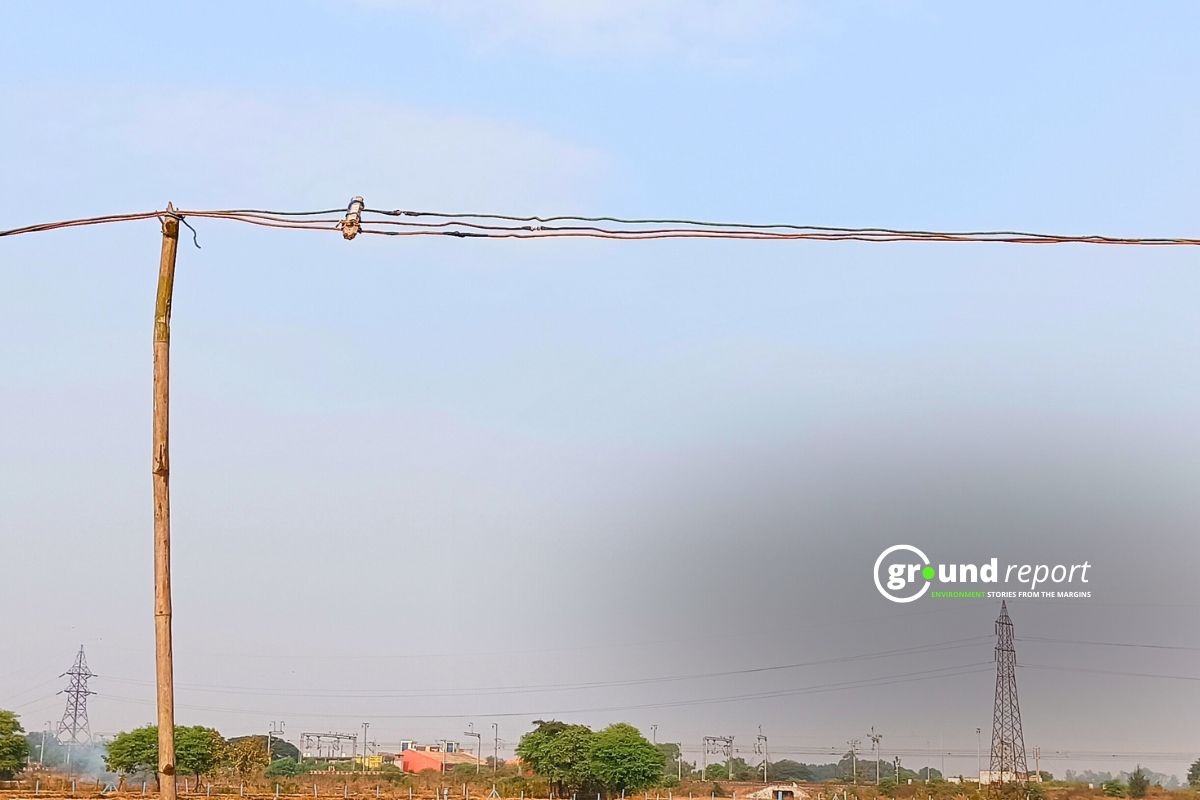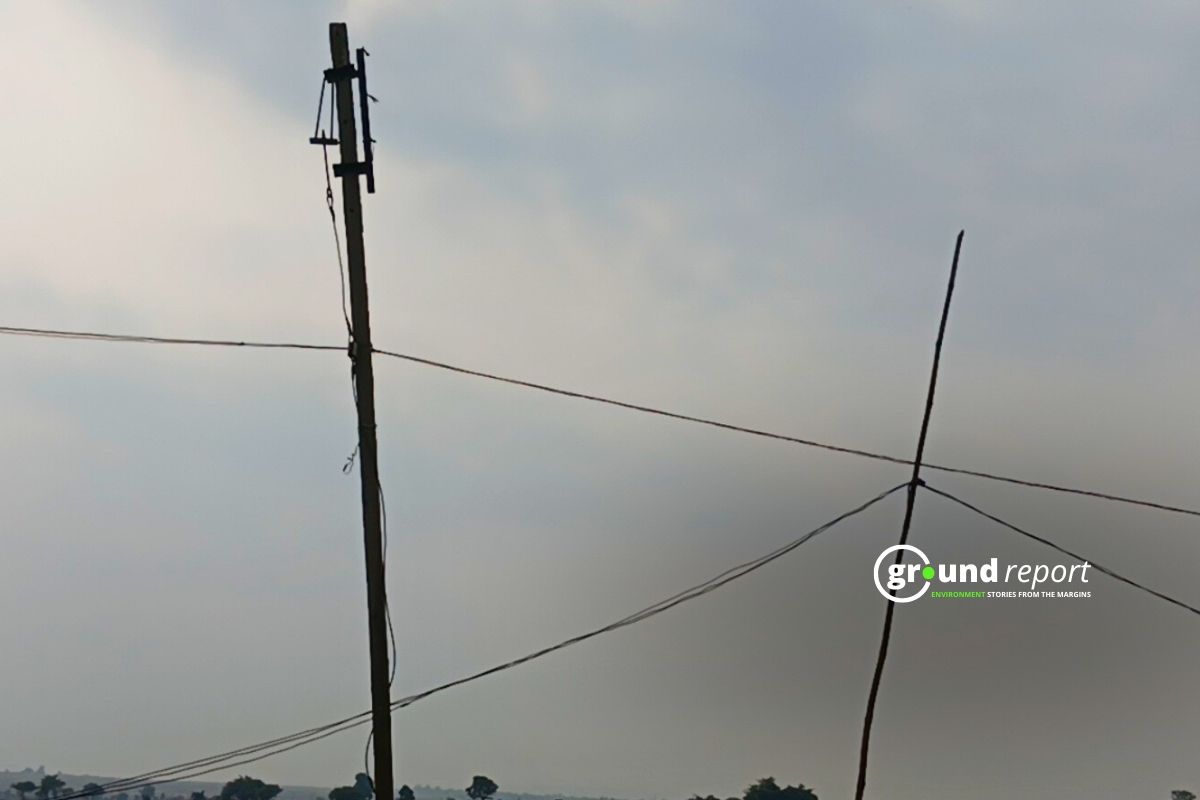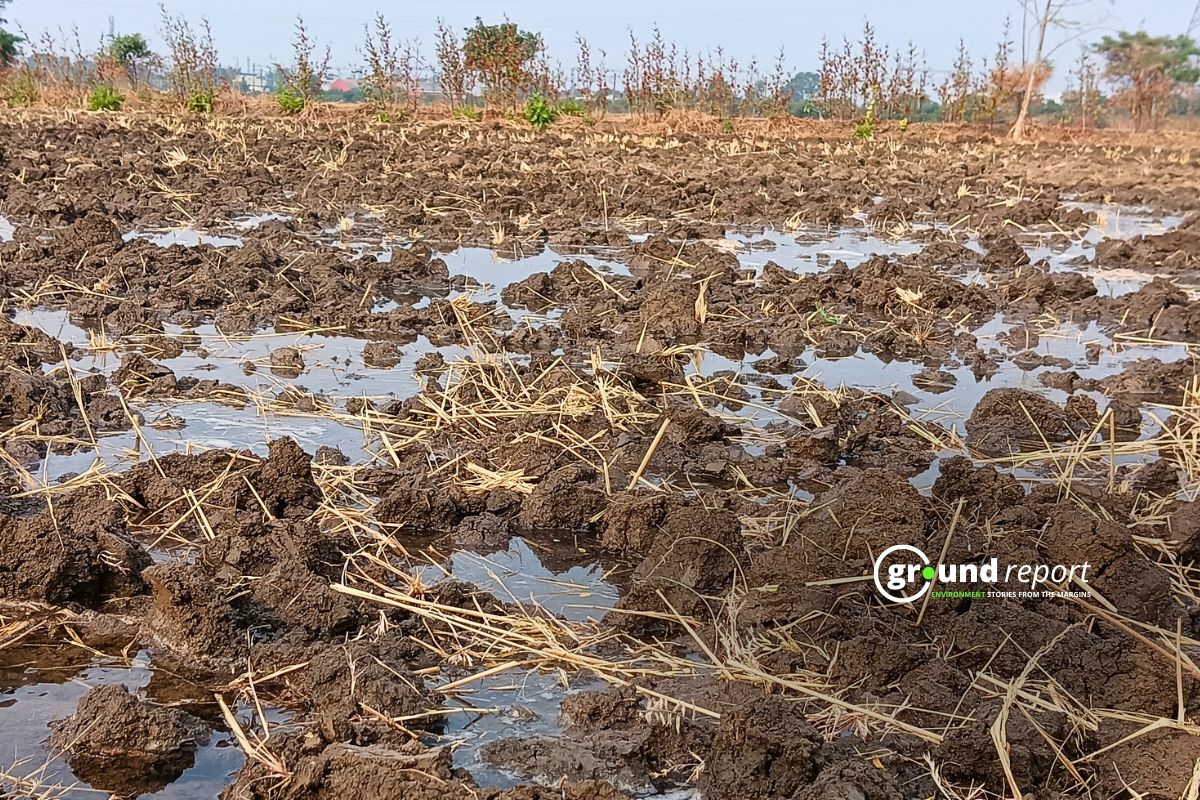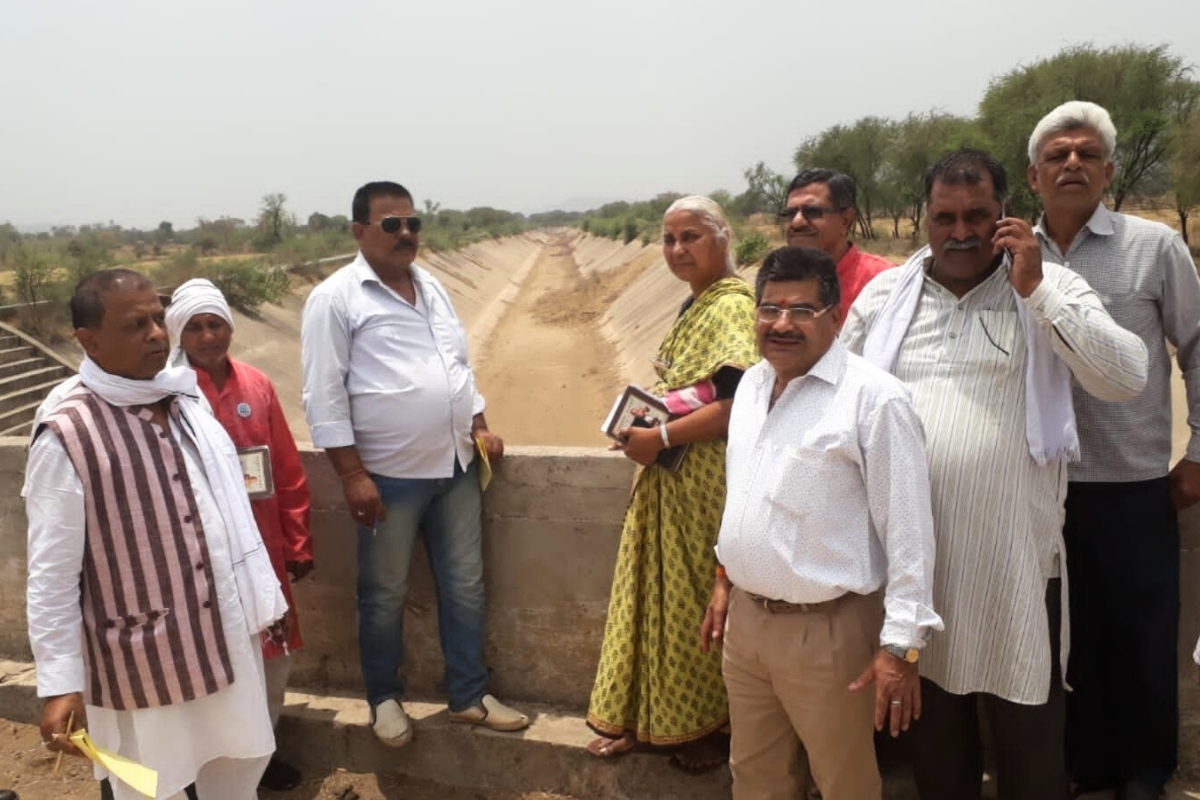Fifty-year-old Subhash Nagar, a farmer from Hiraniya Village in Madhya Pradesh’s Raisen district, is struggling to prepare his 6.5-acre field for wheat sowing. The process, called “Paleva,” involves watering the land before planting. After harvesting his paddy crop on November 18, Nagar began irrigation on November 20. However, with only seven hours of electricity a day, the task has dragged on for 20 days.
“We don’t get the full 10 hours of electricity. Even when we do, the voltage is too low, and the motor often doesn’t start. That’s why it takes so long,” Nagar complains.
Farmers in Obedullaganj, a town in the Raisen district, are supposed to receive 10 hours of electricity during the sowing season, but many report getting only 7–8 hours daily. This inadequate supply is delaying irrigation and pushing wheat sowing back by nearly a month.
Farmers across Madhya Pradesh are grappling with electricity shortages during the crucial Rabi sowing season, causing delays in crop preparation and threatening their livelihoods. Despite government provisions for 10 hours of power daily for agricultural use, many farmers report receiving only 7-8 hours, often at low voltage. This has pushed smaller farmers into deeper distress, as they lack the resources to pay for alternative power arrangements. With wheat sowing already delayed by weeks, the implications for crop yield and farmer incomes are significant, raising questions about the adequacy of rural electricity infrastructure and government policies.
Last month, farmers in Vidisha district made headlines when they fell at the feet of local officials, pleading for relief from power cuts that have disrupted their agricultural activities. However, their protests were short-lived, and the issue of inadequate electricity remains unresolved. With the Rabi sowing season slipping away, wheat farmers are left battling sleepless nights and mounting anxiety as they struggle to prepare their fields on time for the next crop cycle.
Wheat sowing usually begins in the first week of November. However, as of November 8 this year, only 1.056 million hectares have been sown, compared to 2.658 million hectares by the first week of November last year. According to the latest advisory, sowing should have been completed by December 10, but in Obedullaganj, farmers were still preparing their fields in the first week of December.
Small farmers suffer the most
Another farmer from Hiraniya Village, Ashok Nagar, who cultivates 40 acres, says it takes him 24 hours to irrigate just one acre due to persistent low voltage issues. Unlike Subhash, Ashok has a slight advantage—he has secured a temporary connection from the village’s domestic electricity feeder, which offers a 24-hour power supply. This 4-month connection, however, comes at a steep cost of ₹43,000, allowing him to prepare his fields more quickly despite the expense.
Not every farmer can afford expensive alternative electricity connections. Small farmers with limited incomes are left dependent on agriculture-specific feeders, which provide only restricted power.
One such farmer is 55-year-old Hariram Katare, who owns just 2 acres of land and faces even greater challenges due to a lack of irrigation equipment. He relies on his neighbours’ electric motors for water supply.
“We can only water our fields once the other farmers finish preparing theirs and their motors are free. With 24-hour electricity, they could complete their work faster, giving us 6–7 hours for our fields,” he shares.
Rising costs due to power issues
Ashok’s temporary connection brings significant additional expenses. His field is located about 1 km from the feeder, necessitating the installation of 3,500 feet of wire, which costs between ₹40,000 and ₹50,000. While the wiring is a one-time investment, setting up temporary arrangements incurs recurring expenses each season.
For example, farmers use bamboo poles to string the wires for temporary connections. These poles often get damaged and need to be replaced every season, adding around ₹2,000 in labour and material costs.
Poles are there, but no connections
In Obedullaganj, electricity poles are installed in the fields, but the wires are notably absent. Instead, farmers rely on makeshift wiring, often strung from bamboo poles, as Ashok mentioned earlier.
One farmer explains that to set up a 1-kilometre connection, approximately 50 bamboo poles are used to stretch the wires. However, these temporary “fixes” are frequently damaged by rain and strong winds, forcing farmers to spend money every season to re-establish the setup. Before each season, farmers pay for two days of labour to restore these makeshift systems.
One farmer, who prefers to remain anonymous, details the costs:
“Two labourers are needed for the work. The daily wage is about ₹450. So, in two days, a farmer ends up spending roughly ₹2,000 on these temporary arrangements.”
What officials say?
Parag Dhawde, the district general manager of the electricity distribution company in Raisen, maintains that farmers are receiving the mandated 10 hours of power.
“Occasionally, supply is disrupted due to bad weather or maintenance work. Voltage issues are resolved as soon as they are reported. Adequate feeders and substations have already been established,” he claims.
The Deendayal Upadhyaya Gram Jyoti Yojana (DDUGJY), launched in 2014, mandated the separation of agricultural and non-agricultural feeders to ensure a reliable electricity supply for farmers. While the central government has declared the scheme complete, there is no available data on how many villages now have fully functional, dedicated agriculture feeders.
No data on agriculture feeders
According to an official, the government implemented a flat rate of ₹750 per horsepower for permanent agricultural connections and charges farmers ₹10,000–11,000 for temporary three-month connections. Both options guarantee 10 hours of electricity.
State Government Schemes
Under Madhya Pradesh’s Atal Krishi Jyoti Yojana, farmers with permanent agricultural pump connections without meters pay a flat rate of ₹750 per horsepower annually for up to 10 horsepower. For connections above 10 horsepower, the rate is ₹1,500 per horsepower annually.
Energy Minister Pradyuman Singh Tomar claims that 26.59 lakh agricultural consumers benefit from this scheme, and the government allocated ₹13,212.05 crore in subsidies for 2023-24, with another ₹11,065 crore set aside for 2024.
However, Ashok points out that while subsidies reduce electricity rates, the real issue is not the price but the availability and timing of power. Though his village has a dedicated agriculture feeder, the feeder’s capacity is stretched due to too many connections, resulting in low voltage. This hampers irrigation, leading farmers to resort to “illegal” methods to ensure timely crop sowing.
Late sowing means lower yields
Hariram Katare, another farmer, explains that late sowing leads to reduced yields. He notes that if sowing begins after December 15, it can take an additional 2–5 days to complete, pushing the timeline further. “For instance, if sowing starts on December 20, the harvest will only be ready by April 20,” he says.
“By February 15, the weather begins to warm up, and by March, the rising heat causes wheat grains to shrink, resulting in lower production,” he adds.
A study conducted in Uttar Pradesh supports this observation, showing that wheat sown by November 15 yielded 41.46 quintals per hectare, while sowing done by December 15 yielded only 36.11 quintals per hectare—a reduction of 14.82% in yield.
Katare also highlights the growing unpredictability of weather, which often devastates crops. His concern is justified, as seen in 2023, when hailstorms destroyed wheat crops in several areas of Madhya Pradesh.
Adding to their woes, farmers in Obedullaganj report that delayed rice harvesting this season has pushed back wheat sowing. The shortage of urea and DAP fertilisers has further prolonged the process, while persistent electricity issues continue to exacerbate the delays. Past experiences show that such setbacks often lead to lower yields and reduced incomes for farmers, deepening their challenges.
Support us to keep independent environmental journalism alive in India.
Follow Ground Report on X, Instagram and Facebook for environmental and underreported stories from the margins. Give us feedback on our email id greport2018@gmail.com.
Don’t forget to Subscribe to our weekly newsletter, Join our community on WhatsApp, Follow our Youtube Channel for video stories.
Keep Reading
Changing weather pattern impacts soybean crops in Dewas region of MP
Unpredictable weather leaves farmers helpless in Jhansi and Chhatarpur
What is yellow mosaic disease increasing troubles of soybean farmers in MP?

